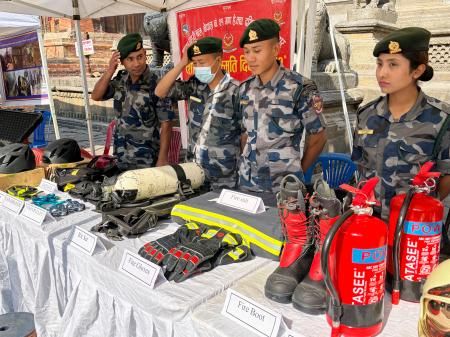Nepal's Earthquake: Lessons in Disaster Preparedness for a Safer Future
The devastating 2015 Nepal earthquake, measuring 7.8 on the Richter scale, left an indelible mark on the nation, claiming thousands of lives and causing widespread destruction. While the immediate aftermath focused on rescue and relief, the long-term impact underscored the crucial need for robust disaster preparedness strategies, not just in Nepal, but globally. This article examines the key lessons learned from the Nepal earthquake, offering valuable insights for individuals, communities, and governments striving to build more resilient societies.
Key Lessons Learned from the Nepal Earthquake
The 2015 earthquake highlighted several critical vulnerabilities and offered valuable lessons for improving disaster preparedness:
1. Infrastructure Weakness: Building Codes and Enforcement
- The Problem: Many structures, particularly older buildings and those in rural areas, lacked adherence to earthquake-resistant building codes. Poor construction quality and a lack of enforcement contributed significantly to the high number of collapses.
- The Lesson: Implementing and strictly enforcing stringent building codes, incorporating modern seismic design principles, and investing in regular building inspections are paramount. This includes using appropriate materials and techniques to withstand seismic activity. Retrofitting older structures is also crucial.
2. Early Warning Systems and Public Awareness: Preparedness is Key
- The Problem: While Nepal has a seismic monitoring system, effective communication and public awareness of earthquake early warning signs were limited. Many people were caught unaware, exacerbating the casualties.
- The Lesson: Investing in advanced early warning systems linked to effective communication channels—including mobile alerts, public address systems, and community-based warning networks—is vital. Regular public awareness campaigns, including earthquake drills and education programs, are equally important. This education should extend to understanding what to do before, during, and after an earthquake.
3. Search and Rescue Capabilities: Rapid Response is Crucial
- The Problem: The initial search and rescue efforts faced challenges due to limited resources, logistical difficulties, and a lack of trained personnel in remote areas. This delayed rescue operations and increased casualties.
- The Lesson: Investing in trained search and rescue teams, providing them with specialized equipment, and establishing efficient logistical networks are critical for effective disaster response. International collaboration and pre-arranged assistance protocols can also significantly enhance response capabilities.
4. Community Resilience: Empowering Local Communities
- The Problem: The earthquake's impact was unevenly distributed, with vulnerable communities disproportionately affected. Limited access to resources and pre-existing inequalities exacerbated the suffering.
- The Lesson: Building community resilience is paramount. This involves empowering local communities through participatory planning, providing them with the skills and resources to prepare for and respond to disasters, and ensuring equitable access to aid and recovery efforts. Community-based disaster risk reduction (CBDRR) strategies are essential.
5. Post-Disaster Recovery and Reconstruction: Building Back Better
- The Problem: The post-earthquake recovery process faced numerous challenges, including bureaucratic hurdles, funding constraints, and coordination issues. Reconstruction efforts needed to address long-term needs and avoid repeating past mistakes.
- The Lesson: A comprehensive and well-planned recovery and reconstruction strategy, involving community participation, transparent governance, and international collaboration, is crucial. This includes focusing on sustainable infrastructure, building resilience, and addressing the root causes of vulnerability.
Looking Ahead: A Path Towards Seismic Resilience
The Nepal earthquake serves as a stark reminder of the devastating consequences of inadequate disaster preparedness. By learning from this tragedy and implementing the lessons outlined above, Nepal and other earthquake-prone regions can significantly enhance their resilience and minimize future losses. Investing in infrastructure, improving early warning systems, enhancing search and rescue capabilities, building community resilience, and developing robust post-disaster recovery plans are essential steps towards a safer future.
Further Resources:
This article provides valuable information for individuals, communities, and governments seeking to enhance their disaster preparedness strategies. By understanding the lessons learned from the Nepal earthquake, we can strive to create a more resilient and safer world.
